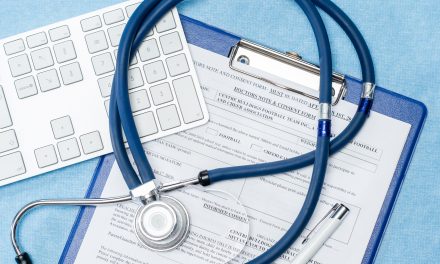
Chiropractic Management of Pregnancy-Related Low Back Pain

Researchers estimate that between 45-75% of pregnant women will experience low back pain at some stage of their pregnancy. (1-5) Up to 33% rate their pain as severe. (6) Pregnancy-related low back pain (P-LBP) leads to lower quality of life, restricted activity, and disability, with almost 25% of pregnant women taking sick leave for LBP. (2,7-11) The recurrence rate for pregnancy-related low back pain is 85-90%. (11-14) Consequently, almost 1 in 5 women who report P-LBP during an initial pregnancy will avoid future pregnancies due to fear of returning symptoms (15)
Stressors and Postural Strains
Pregnancy-related low back pain is not generally the result of true structural disease, like disc lesion or spondylolisthesis, but rather a combination of “functional” stressors, including weight gain, gait changes, and postural strains that occur contemporaneously with hormone-induced ligamentous laxity. (16-20) Pregnancy creates the perfect firestorm of progressively increasing load with diminishing stability. (21) The average woman gains between 20- 40 pounds throughout pregnancy. (13,22) This predominantly frontal weight gain advances the center of gravity, forcing an anterior pelvic tilt and lumbar hyperlordosis, placing excessive stress on the ligaments, discs, lumbar facet joints and sacroiliac joints. (23-25) Since an excessive lumbar lordosis diminishes the spine’s capacity to absorb axial load, the intervertebral discs undergo excessive compression, likewise exacerbated by weight gain. (26-28) The abdominal muscles, which are an integral support mechanism for the lumbar spine, are stretched to accommodate the expanding uterus, thereby compromising their ability to maintain posture and support. (13) Biomechanical stressors are compounded by the hormone relaxin, which increases tenfold during pregnancy. (13) Relaxin triggers lumbopelvic hypermobility and threatens core stability. (26)
The extremes of activity seem to contribute to P-LBP. (29,30) Sedentary lifestyles increase the risk of developing low back pain. Unfortunately, regular exercise and physical activity typically decrease throughout pregnancy. (31-38) Conversely, lifestyles and occupations that are “physically demanding” also carry an increased risk of developing pregnancy-related low back pain. (13) A history of lower back pain doubles the risk of developing P-LBP. (13)
Onset of Pain
Pregnancy-related low back pain typically starts between the fifth and seventh months. (39) Nevertheless, a significant proportion of women experience pain in the first trimester before mechanical changes could play a significant etiological role. Early onset pain may be related to hormonal and/or emotional stressors. (13,40)
Symptoms of P-LBP are typically localized to the lumbosacral region but may radiate to the buttock and posterior thigh. Symptoms extending into the calf are possible (41), but should raise suspicion for lumbar radiculopathy. Most patients describe their pain as mild to moderate, but 20-30% report “severe” symptoms. (42,43) Symptoms are often provoked by activity, including standing, sitting, coughing, sneezing, and straining during a bowel movement. (44) Symptoms often increase throughout the day. (23,45-47) Many patients report nighttime pain that disturbs sleep. (23,39) The Oswestry questionnaire can help document functional impairment. The Fear Avoidance Belief Questionnaire (FABQ) may help identify psychological factors that could delay recovery. (48,49)
Red Flags
Clinicians should be cautious to screen for symptoms that suggest a more threatening diagnosis, including fever, chills, bleeding, spotting, unusual discharge, cramping, or sudden onset pelvic pain. (50,51) Other “red flags” include light-headedness, shortness of breath, chest pain, headache, calf pain or swelling, decreased fetal movement, and/or neurologic involvement. (52)
Identify Dysfunction
Since true “structural” etiologies are uncommon, clinical evaluation should focus on identifying dysfunction in otherwise healthy tissue. Sacroiliac joint dysfunction is a common source of P-LBP. No single orthopedic maneuver is diagnostic for sacroiliac joint dysfunction, but collectively the following four tests can have a very high predictive value: SI distraction, Thigh thrust (aka P4), SI compression, and Sacral thrust. (53) The Thigh thrust test may be particularly useful in identifying sacroiliac joint dysfunction in pregnant patients. (54) Sensitivity and specificity for SI involvement during pregnancy approach 90% when three or more SI provocation tests reproduce the patient’s symptoms and directional preference testing fails to centralize the patient’s pain. (53) Other potentially useful SI joint assessments include Gaenslen’s test and Gillett test.
Facet joint irritation and lumbar hypomobility may be assessed via the Long dorsal ligament test (55), static palpation, motion palpation, PA shear test, Spring test, and Kemp’s test. The Active straight leg raise test (ASLR) shows good specificity (88%) and sensitivity (54%) for pregnancy-related low back pain. (56)
Pregnant postures, particularly pelvic anteversion, often generate iliopsoas hypertonicity. (57) Hip flexor length may be assessed via the Seated Thomas test. This test is performed by having the patient sit on the edge of an elevated table with one leg hanging off, knee slightly bent. The clinician applies light pressure to assess the flexibility of the hip flexors. The inability to extend the hip to 90 degrees suggests hip flexor hypertonicity. (23) Clinicians should assess for hip abductor/ gluteus medius weakness.
What to Avoid
Diagnostic procedures that utilize ionizing radiation should be avoided during pregnancy. When imaging is required, clinicians may consider ultrasonography or MRI. (58,59) The use of iodine and contrast agents should be avoided as they may carry the potential for fetal injury. (58,59)
While intentional exposure to ionizing radiation should be avoided during pregnancy, some women are unintentionally exposed before their pregnancy is recognized. According to the American College of Radiology, exposure to a single x-ray procedure would not threaten the well being of a developing pre-embryo, embryo, or fetus. (60) A single diagnostic procedure has no known risk for fetal abnormality, including congenital malformation or mental retardation. (59) Exposure to a single x-ray procedure during pregnancy is not a reason to terminate the pregnancy. (62,63)
Diagnosis
The differential diagnosis for pregnancy-related low back pain includes lumbar segmental joint dysfunction, sacroiliac joint dysfunction, lumbar facet syndrome, lumbosacral sprain/strain, lumbar disc lesion, degeneration, lumbar instability, hip pathology, fracture, infection, neoplasm, and diastasis rectus abdominis. (23)
Less than half of women with pregnancy-related low back pain seek medical care. (13,64-66) Unfortunately, 40% of women who experience pregnancy-related LBP continue to suffer six months post-partum, and 20% report pain three years later. (67)
Treatment
A majority of patients and providers would consider CAM therapy, including manual therapy, for pregnancy-related low back pain. (15) In fact, over 90% of prenatal healthcare providers are willing to recommend non-pharmacologic treatment, including alternative therapies. (68) Common therapies for the management of pregnancy-related low back pain include exercise, manual manipulation, education, acupuncture, and pelvic belts. (12,31-33,55,69-78,112,113) A multi-modal approach that includes patient education, exercise, muscle strengthening, and manual therapy has shown superior outcomes with lower disability compared to standard obstetric care. (32,33)
The goal of manual therapy is to restore normal joint mobility and reduce muscle tension. (55) Manual therapy, including chiropractic manipulation, demonstrates medium to large benefit for the management of pregnancy-related low back pain. (75,110,111) Spinal manipulation is an important component in the management of pregnancy-related low back pain. Almost 75% of women undergoing chiropractic manipulation report significant pain reduction and clinically significant improvements in disability. (51,110) Women who seek chiropractic care throughout pregnancy may have an added benefit of shorter labor times. (79,109) Incidentally, postpartum LBP also responds to spinal manipulation, approximately 10 times greater than watchful waiting. (115)
Muscle tightness may be treated with contract/relax stretching and myofascial release. (80) A “waddling” pregnancy posture includes prolonged hip external rotation, which stresses the piriformis muscle. (81) Gentle myofascial release and stretching exercises may be appropriate for hypertonic iliopsoas and piriformis muscles. (57)
Therapeutic exercise has been shown to significantly reduce pregnancy-related low back pain. (82,83) Specific exercises include pelvic tilts, knee to chest stretches, sciatic nerve floss, hamstring stretches, and Kegel exercises. (13,83) Stability exercises should target the gluteus maximus, gluteus medius, quadratus lumborum, abdominal wall, and intrinsic spine muscles in quadruped or side lying positions. (55,84)
Patients may benefit from continuing aerobic exercise throughout pregnancy. The US Department of Health and Human Services exercise guidelines concerning pregnant patients suggest that healthy women may begin or continue moderate-intensity aerobic exercise for at least 150 minutes per week. Women should not begin vigorous exercise during pregnancy, but those who were pre-conditioned to vigorous exercise may continue. (78) In addition to musculoskeletal benefits, ongoing exercise during pregnancy decreases one’s risk of excessive weight gain, pre-eclampsia, gestational diabetes, and pre-term birth, while improving self-image and pain tolerance. (85-93) In particular, water aerobics (83,94) and yoga (95,96,114) have shown benefit.
Conclusion
Employing therapy modalities during pregnancy is controversial. Continuous or pulsed ultrasound is contraindicated over the low back, abdomen, and uterus during pregnancy, as potentially teratogenic sound waves may pass through amniotic fluid. (97) Clinicians should avoid most forms of electrical stimulation over the low back, pelvis, or abdomen during pregnancy. (97) Unwanted uterine contractions are the primary risk associated with e-stim. (98-101) The effect of electrical current on a developing fetus is uncertain, and clinicians should err on the side of caution when considering the application to distant sites. (97) Clinicians may, however, consider the use of a sensory-level TENS unit to sites remote from the uterus.
TENS has been shown to be safe and beneficial for the treatment of lower back pain during pregnancy with no reported adverse effects on the newborn. (98-100,102,103) The use of low-level laser therapy is contraindicated during pregnancy due to possible light-induced effects on fetal growth and development. (97,104) Application of superficial heat to distant sites is safe, however, clinicians should avoid application of heat to the trunk or full body (i.e. hydrotherapy tank), as the elevation of maternal body temperature is known to cause fetal malformations. (105,106) The application of superficial ice is a safe alternative. (97) The use of thermal or non-thermal forms of short-wave therapy is strongly contraindicated during pregnancy. (97)
Activities of daily living advice would include attempting to minimize the lumbar hyperlordosis, take frequent breaks from sitting or standing, and use of a small footstool to alternate feet when standing. Sleeping with a pillow between the knees in a side-lying posture is often well tolerated. Patients should be counseled on proper footwear. The use of a sacroiliac/pelvic support belt is effective and relieving pregnancy-related low back pain. (107,108) Fear avoidance behaviors may be lessened through reassurance and education. (85) Acetaminophen is generally an acceptable OTC medication; however, aspirin and Ibuprofen are contraindicated. (13)
References
1. Wu WH, Meijer OG, Uegaki K, Mens JM, van Dieën JH, Wuisman PI, et al. Pregnancy related pelvic girdle pain (PPP), I: terminology, clinical presentation, and prevalence. Eur Spine J 2004;13:575–89.
2. Pierce H, Homer C, Dahlen H, King J. Pregnancy-related low back and/or pelvic girdle pain: listening to Australian women. Abstract presented at the XI International Forum for Low Back Pain Research in Primary Care, Melbourne, Australia, 15–18 March 2011.
3. Diakow P.R.P., Gadsby T.A., Gadsby J.B., Gleddie J.G., Leprich D.J., Scales A.M. Back pain during pregnancy and labor. J Manipulative Physiol Ther.1991;14(2):116–118.
4. Berg G., Hammer M., Moller-Nielsen J., Linden U., Thorblad J. Low back pain in pregnancy. Obstet Gynecol.1988;71:71–75.
5. Mogren IM, Pohjanen AI. Low back pain and pelvic pain during pregnancy: prevalence and risk factors. Spine. 2005 Apr 15;30(8);983-91.
6. Hall J, Cleland J, Palmer J. The Effects of Manual Physical Therapy and Therapeutic Exercise on Peripartum Posterior Pelvic Pain: Two Case Reports. Journal of Manual and Manipulative Therapy. 2005;13(2): 94-102
7. Wellock VK, Crichton MA. Symphysis pubis dysfunction: women’s experiences of care. Br J Midwif 2007;15:494
8. Kristiansson P, Svarsudd K, von Schoultz B. Back pain during pregnancy: a prospective study. Spine 1996;21:702-9.
9. Wu W, Meijer OG, Jutte PC, et al. Gait in patients with pregnancy-related pain in the pelvis: an emphasis on the coordination of transverse pelvic and thoracic rotations. Clin Biomech 2002;17:678-86.
10. Owens K, Pearson A, Mason G. Symphysis pubis dysfunction: a cause of significant obstetric morbidity. Eur J Obstet Gynecol Reprod Biol
11. George JW, Skaggs CD, Thompson PA, Nelson DM, Gavard JA, Gross GA. A randomized controlled trial comparing a multimodal intervention and standard obstetrics for low back and pelvic pain in pregnancy. Am J Obstet Gynecol 2013 Apr; 208(4):295.e1-7
13. Sabino J, Grauer JN. Pregnancy and low back pain. Curr Rev Musculoskelet Med. 2008 Jun; 1(2): 137–141.
14. Mens JMA, Vleeming A, Stoeckart R, Stam HJ, Snijders CJ. Understanding peripartum pelvic pain. Implications of a patient survey.Spine.1996;21(11):1363–70.
15. Wang SM, DeZinno P, Fermo L, et al. Complementary and alternative medicine for low-back pain in pregnancy: a cross-sectional survey. J Altern Complement Med. 2005;11(3):459-464.
16. George JW, Skaggs CD, Thompson PA, Nelson DM, Gavard JA, Gross GA. A randomized controlled trial comparing a multimodal intervention and standard obstetrics for low back and pelvic pain in pregnancy. Am J Obstet Gynecol 2013 Apr; 208(4):295.e1-7
17. Chan YL, Lam WWM, Lau TK, Metreweli C, Chan DPN. Back pain in pregnancy: magnetic resonance imaging correlation. Clin Radiol 2002;57:1109-12.
18. Waddell G, Somerville D, Henderson I, Newton M. Objective clinical evaluation of physical impairment in chronic low back pain. Spine 1992;17:617-28.
19. Cherkin DC, Deyo RA, Street JH, Barlow W. Predicting poor outcomes for back pain seen in primary care using patients’ own criteria. Spine 1996;21:2900-7.
20. Bronfort G, Bouter LM. Responsiveness of general health status in chronic low back pain: a comparison of the COOP charts and the SF-36. Pain 1999;83:201-9.
21. Mogren IM, Pohjanen AI. Low back pain and pelvic pain during pregnancy: prevalence and risk factors. Spine 2005;30:983-91.
22. Stahmann Dilfer C.; Your Baby, Your Body (Fitness during pregnancy); Crown publishers, inc., New York
23. Assi T. Low Back Pain and Pregnancy. Physio-pedia.com Accessed 6/23/15
24. Russell R., Reynolds F. Back pain, pregnancy, and childbirth. British medical journal. 1997;1059
25. To WK, Wong M W N. Factors associated with back pain symptoms in pregnancy and the persistence of pain 2 years after pregnancy. Acta Obstetricia et Gynecologica Scandinavica. 2003; 1086-91.
26. DiMarco D.B. The female patient: enhancing and broadening the chiropractic encounter with pregnant and postpartum patients. J Am Chiropr Assoc.2003;40(11):18–24.
27. Hart L.M. Obstetrical practice. J Am Osteopath Assoc.1918:609–614.
28. Jones M. The value of routine manipulation in pregnancy. J Am Osteopath Assoc.1952;51:554–557.
29. Mogren IM, Pohjanen AI. Low back pain and pelvic pain during pregnancy: prevalence and risk factors.Spine.2005;30(8):983–91.
30. Mogren IM. Previous physical activity decreases the risk of low back pain and pelvic pain during pregnancy. Scand J Public Health.2005;33(4):300–6.
31. Borodulin KM, Evenson KR, Wen F, Herring AH, Benson AM. Physical activity patterns during pregnancy. Med Sci Sports Exerc 2008; 40: 1901–8.
32. Gaston A, Cramp A. Exercise during pregnancy: a review of patterns and determinants. J Sci Med Sport 2011; 14: 299–305.
33. Ning Y, Williams MA, Dempsey JC, Sorensen TK, Frederick IO, Luthy DA. Correlates of recreational physical activity in early pregnancy. J Matern Fetal Neonatal Med 2003; 13: 385–93.
34. Poudevigne MS, O’Connor PJ. A review of physical activity patterns in pregnant women and their relationship to psychological health. Sports Med 2006; 36: 19–38.
35. Malina, R.M. Tracking of exercise across the lifespan. PCPFS Res Dig. 2001; 3
36. Brown, W. and Trost, S. Life transitions and changing exercise patterns in young women. Am J Prev Med. 2003; 25: 140–143
37. Godin, G., Vezina, L., and Leclerc, O. Factors influencing intentions of pregnant women to exercise after giving birth. Public Health Rep. 1989; 104: 188–195
38. Mottola, M.F. Exercise in the postpartum period: practical applications. Curr Sports Med Rep. 2002; 1: 362–368
39. Fast A, Shapiro D, Ducommun EJ, Friedmann LW, Bouklas T, Floman Y. Low back pain in pregnancy.Spine.1987;12:368–71.
40. Mogren IM, Pohjanen AI. Low back pain and pelvic pain during pregnancy: prevalence and risk factors.Spine.2005;30(8):983–91.
41. Sneag D, Bendo J. Pregnancy-related low back pain. Orthopedics. 2007; 30: 839
42. Mens JM, Huis YH, et al. Severity of signs and symptoms in lumbopelvic pain during pregnancy. Manual Therapy 17 (2012)
43. Hall J, Cleland J, Palmer J. The Effects of Manual Physical Therapy and Therapeutic Exercise on Peripartum Posterior Pelvic Pain: Two Case Reports. Journal of Manual and Manipulative Therapy. 2005;13(2): 94-102
44. To WWK, Wong MWN. Factors associated with back pain symptoms in pregnancy and the persistence of pain 2 years after pregnancy. Acta Obstetricia et Gynecologica Scandinavica. 2003; 1086-91.
45. Fast A, Shapiro D, Ducommun EJ, Friedmann LW, Bouklas T, Floman Y. Low back pain in pregnancy.Spine.1987;12:368–71.
46. Mantle MJ, Greenwood RM, Currey HLF. Backache in pregnancy. Rheumatol Rehabil 1977;16:95-101.
47. Nwuga VCB. Pregnancy and back pain among upper-class Nigerian women. Aust J Physiother 1982;28:8-11.
48. Boersma K, Linton S. Psychological processes underlying the development of a chronic pain problem. A prospective study of the relationship between profiles of psychological variables in the fear-avoidance model and disability. Clin J Pain 2006;22: 160-6.
49. Waddell G, Newton M, Henderson I, Somerville D, Main CJ. A fear-avoidance beliefs questionnaire (FABQ) and the role of fear-avoidance beliefs in chronic low back pain and disability. Pain 1993;52:157-68.
50. Murphy DR, Hurwitz EL. A theoretical model for the development of a diagnosis-based clinical decision rule for the management of patients with spinal pain. BMC Muscu- loskelet Disord 2007;8:75.
51. Shaw G. When to adjust: chiropractic and pregnancy. J Am Chiropr Assoc.2003;40(11):8–16
52. Perkins J, Hammer RL, Loubert PV. Identification and management of pregnancy-related low back pain. J Nurse Midwifery. 1998;43:331–340.
53. Laslett M. Evidence-Based Diagnosis and Treatment of the Painful Sacroiliac Joint J Man Manip Ther. 2008; 16(3): 142–152
54. Mens JMA et al. Severity of signs and symptoms in lumbopelvic pain during pregnancy. Manual Therapy, April 2012 Volume 17, Issue 2, Pages 175–179
55. George JW, Skaggs CD, Thompson PA, Nelson DM, Gavard JA, Gross GA. A randomized controlled trial comparing a multimodal intervention and standard obstetrics for low back and pelvic pain in pregnancy. Am J Obstet Gynecol 2013 Apr; 208(4):295.e1-7
56. Jan MA Mens, Yvonne H. Huis in ’t Veld, Annelies Pool-Goudzwaard. The Active Straight Leg Raise test in lumbopelvic pain during pregnancy Manual Therapy 17 (2012) 364-68
57. Borggren CL. Pregnancy and chiropractic: a narrative review of the literature. J Chiropr Med. 2007 Spring; 6(2): 70–74.
58. ACOG Committee Opinion. Guidelines for Diagnostic Imaging During Pregnancy. Number 299, September 2004. Retrieved from http://www.acog.org/ on 6/25/15.
59. Patel SJ, Reede DL, Katz DS, et al. Imaging the pregnant patient for nonobstetric conditions: algorithms and radiation dose considerations. Radiographics. 2007 Nov-Dec;27(6):1705-22.
60. Gray JE. Safety (risk) of diagnostic radiology exposures. In: American College of Radiology. Radiation risk: a primer. Reston (VA): ACR; 1996. p. 15–7.
62. Brent RL. The effect of embryonic and fetal exposure to x-ray, microwaves, and ultrasound: counseling the pregnant and nonpregnant patient about these risks. Semin Oncol 1989;16:347–68.
63. Hall EJ. Scientific view of low-level radiation risks. Radiographics 1991;11:509–18.
64. Mogren IM. Previous physical activity decreases the risk of low back pain and pelvic pain during pregnancy. Scand J Public Health.2005;33(4):300–6.
65. Diakow P.R.P., Gadsby T.A., Gadsby J.B., Gleddie J.G., Leprich D.J., Scales A.M. Back pain during pregnancy and labor. J Manipulative Physiol Ther.1991;14(2):116–118.
66. Fast A., Shapiro D., Ducommun E.J., Friedmann L.W., Bouklas T., Flowman Y. Low back pain in pregnancy.Spine.1987;12:368.
67. Norén L, Östgaard S, Johansson G, Östgaard HC. Lumbar back and posterior pelvic pain during pregnancy: a 3-year follow-up. Eur Spine J.2002;11:267–71.
68. Mens JMA, Damen L, Snijders CJ, Stam HJ. The mechanical effect of a pelvic belt in patients with pregnancy-related pelvic pain. Clin Biomech.2006;21(2):122–7.
69. Garshasbi A, Faghih Zadeh S. The effect of exercise on the intensity of low back pain in pregnant women. Int J Gynaecol Obstet 2005;88:271-5.
70. Licciardone JC, Buchanan S, Hensel K, King HH, Fulda KG, Stoll ST. Osteopathic manipulative treatment of back pain and related symptoms during pregnancy: a randomized controlled trial. Am J Obstet Gynecol 2010; 202:43.e1– 8.
71. Murphy DR, Hurwitz EL, McGovern EE. Outcome of pregnancy-related lumbopelvic pain treated according to a diagnosis-based decision rule: a prospective observational cohort study. J Manipulative Physiol Ther 2009;32:616-24.
72. Ee CC, Manheimer E, Pirotta MV, White AR. Acupuncture for pelvic and back pain in pregnancy: a systematic review. Am J Obstet Gynecol 2008;198:254-9.
73. Mens JM, Damen L, Snijders CJ, Stam HJ. The mechanical effect of a pelvic belt in patients with pregnancy-related pelvic pain. Clin Biomech 2006;21:122-7.
74. Licciardone JC, Prevention of Progressive Back-Specific Dysfunction During Pregnancy: An Assessment of Osteopathic Manual Treatment Based on Cochrane Back Review Group Criteria J Am Osteopath Assoc. 2013;113(10):728-736
75. Peterson CK. Outcomes of pregnant patients with low back pain undergoing chiropractic treatment: a prospective cohort study with short term, medium term, and 1-year follow-up. Chiropr Man Therap. 2014 Apr 1;22(1):15. doi: 10.1186/2045-709X-22-15.
76. Lisi AJ. Chiropractic spinal manipulation for low back pain of pregnancy: a retrospective case series. J Midwifery Womens Health 2006; 51:7-10.
77. Shaw G. When to adjust: chiropractic and pregnancy. J Am Chiropr Assoc. 2003;40(11):8–16.
78. U.S. Department of Health and Human Services. 2008 physical activity guidelines for Americans. Washington (DC): Department of Health and Human Services; 2008.
79. J.M. Fallon. Textbook on chiropractic & pregnancy. Arlington, VA: International Chiropractic Association; 1994: 52, 109.
80. Lewit K. Manipulative therapy in rehabilitation of the motor system. London: Butterworths; 2002:261-75.
81. Bartol K.M. Back to basics: considerations in adjusting women. Top Clin Chiropr.1997;4(3):1–10.
82. Garshasbi A, Faghih Zadeh S. The effect of exercise on the intensity of low back pain in pregnant women. Spine.2005;30(8):983–91.
83. Pennick VE, Young G. Interventions for preventing and treating pelvic and back pain in pregnancy. Cochrane Database Syst Rev 2007: CD001139.
84. Vallone S. The role of chiropractic in pregnancy. ICA Int Rev Chiropr.2002:47–51.
86. Hegaard, H.K., Pedersen, B.K., Nielsen, B.B. et al. Leisure-time exercise during pregnancy and impact on gestational diabetes mellitus, preeclampsia, preterm delivery and birth weight: a review. Acta Obstet Gyn Scan. 2007; 86: 1290–1296
87. Marcoux, S., Brisson, J., and Fabia, J. The effect of leisure-time exercise on the risk of preeclampsia and gestational hypertension. J Epidemiol Commun Health. 1989; 43: 147–152
88. Sorensen, T., Williams, M., Lee, I. et al. Recreational exercise during pregnancy and risk of preeclampsia. Hypertension. 2003; 41: 1273–1280
89. Dempsey, J.C., Sorenson, T.K., Williams, M.A. et al. Prospective study of gestational diabetes mellitus risk in relation to maternal recreational exercise before and during pregnancy. Am J Epidemiol. 2004; 159: 663–670
90. Mottola, M.F. The role of exercise in the prevention and treatment of gestational diabetes mellitus. Curr Sports Med Rep. 2007; 6: 381–386
91. Juhl, M., Andersen, P.K., Olsen, J. et al. Physical exercise during pregnancy and the risk of preterm birth: a study within the Danish national birth cohort. Am J Epidemiol. 2008; 167: 859–866
92. Exercise during pregnancy and the postpartum period. ACOG Committee Opinion No. 267. January 2002. American College of Obstetricians and Gynecologists. Obstet Gynecol 2002; 99: 171–3.
93. Clapp, J.F. and Kiess, W. Effects of pregnancy and exercise on concentrations of the metabolic markers tumor necrosis factor [alpha] and leptin. Am J Obstet Gynecol. 2000; 182: 300–306
94. Granath AB, Hellgren MSE, Gunnarsson RK. Water aerobics reduces sick leave due to low back pain during pregnancy. JOGNN.2006;35(4):465–71.
95. Ehrlich G., Low Back pain. Bulletin of the World Health Organization 2003, 81 (9)
96. Martins RF, Pinto E Silva JL. Treatment of pregnancy-related lumbar and pelvic girdle pain by the yoga method: a randomized controlled study. J Altern Complement Med. 2014 Jan;20(1):24-31. Epub 2013 Mar 18.
97. Rennie S. Electrophysical Agents- Contraindications And Precautions: An Evidence-Based Approach To Clinical Decision Making In Physical Therapy. Physiother Can. 2010 Fall; 62(5): 1–80.
98. Belanger AY. Physiological evidence for an endogenous opiate-related pain-modulating system and its relevance to TENS: a review. Physiother Can. 1985;37:163–8.
99. Chapman CR, Benedetti C. Analgesia following transcutaneous electrical stimulation and its partial reversal by a narcotic antagonist. Life Sci. 1977;21:1645–8. doi: 10.1016/0024-3205(77)90243-0.
100. Immediate influence of transcranial electrostimulation of pain and ß-endorphin blood levels: an active placebo-controlled study. Am J Phys Med Rehabil. 2003;82:81–5.
101. Dunn P, Rogers D, Halford K. Transcutaneous electrical nerve stimulation at acupuncture points in the induction of uterine contractions. Obstet Gynecol. 1989;73:286–90.
102. Coldron Y, Crothers E, Haslam J, Notcutt W, Sidney D, Thomas R, et al. ACPWH guidance on the safe use of Transcutaneous Electrical Nerve Stimulation (TENS) for musculoskeletal pain during pregnancy. London, UK: Edited/written by the ACPWH and published by the Chartered Society of Physiotherapists; 2007.
103. Keskin EA, Onur O, Keskin HL, Gumus II, Kafali H, Turhan N. Transcutaneous electrical nerve stimulation improves low back pain during pregnancy. Gynecol Obstet Invest. 2012;74(1):76-83P4.
104. Navratil L, Kymplova K. Contraindications in noninvasive laser therapy: truth and fiction. J Clin Laser Med Surg. 2002;20:341–3.
105. Shiota K, Orpitz JM. Neural tube defects and maternal hyperthermia in early pregnancy: epidemiology in a human embryo population. Am J Med Genet. 1982;12:281–8.
106. Kalter H, Warkany J. Congenital malformations: etiological factors and their role in prevention. N Engl J Med. 1983;308:424–31.
107. Mens JMA, Vleeming A, Stoeckart R, Stam HJ, Snijders CJ. Understanding peripartum pelvic pain. Implications of a patient survey. Spine.1996;21(11):1363–70.
108. Biering-Sorensen F. A prospective study of low back pain in a general population. I. Occurrence, recurrence, and aetiology. Scand J Rehabil Med. 1983;15:71–79.
109. Fallon J.M. Chiropractic and pregnancy: a partnership for the future. ICA Int Rev Chiropr.1990;46(6):39–42.
110. Murphy DR, Hurwitz EL, McGovern EE. Outcome of pregnancy-related lumbopelvic pain treated according to a diagnosis-based decision rule: a prospective observational cohort study. J Manipulative Physiol Ther 2009;32:616-24.
111. Lisi AJ. Chiropractic spinal manipulation for low back pain of pregnancy: a retrospective case series. J Midwifery Womens Health 2006; 51:7-10.
112. Norén L, Ostgaard S, Nielsen TF, Ostgaard HC. Reduction of sick leave for lumbar back and posterior pelvic pain in pregnancy. Spine (Phila Pa 1976). 1997;22(18):2157-2160.
113. Bastiaenen CH, de Bie RA, Wolters PM, et al. Effectiveness of a tailor-made intervention for pregnancy-related pelvic girdle and/or low back pain after delivery: short-term results of a randomized clinical trial. BMCMusculoskeletal Disord 2006;27:7-19.
114. Sharma M, Branscum P. Yoga interventions in pregnancy: a qualitative review. J Altern Complement Med. 2015 Apr;21(4):208-16.
115. Schwerla F, et al. Osteopathic manipulative therapy in women with postpartum low back pain and disability: A pragmatic randomized controlled trial. J Am Osteopath Assoc. 2015 Jul;115(7):416-25.















